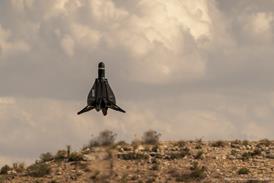Peter La Franchi/CANBERRA
The Australian Department of Defence is expected to announce a shortlist of just one contender for its Project Air 5418 Follow On Stand Off Weapon (FOSOW) requirement within the next six weeks.
The decision is expected to be between the Lockheed Martin AGM-158 Joint Air-to-Surface Stand-off Missile (JASSM) and an Israeli Military Industries (IMI)/BAE Systems Australia bid based on the Delilah MkII missile and the MSOV Goliath gliding weapons dispenser.
The programme is being lined up to receive funding as part of a submission being prepared for Australian Cabinet consideration in early August.
The Defence Department issued a FOSOW request for proposals late last year while reserving the right to shortlist to a single bid. Other tender respondents comprised Boeing, with the AGM-84 SLAM-ER and Raytheon's AGM-88 HARM; Raytheon, with HARM and a powered variant of its AGM-154 Joint Stand-Off Weapon, and Taurus, with a modified version of the KEPD-350.
An Australian acquisition of the long-range JASSM would represent a major shift in the relative capabilities of stand-off weapons that are being held in inventories throughout the South-East Asian region.
FOSOW calls for a stand-off capability against radiating, wide-area, point and maritime targets at a minimum range of 185km with a maximum 500kg (1,100lb) warhead. It remains unclear how Lockheed Martin proposes to meet the radiating target requirement as there is no anti-radiation seeker in the existing US JASSM development programme.
Questions also surround how Lockheed Martin intends to meet Australian man-in-the-loop targeting requirements for the terminal phase of engagement.
Goliath and Delilah MkII are derivatives of the Delilah anti-radiation drone developed by IMI in the late 1980s. The two weapons on offer to Australia make use of the same datalink pod as the AGM-142 Popeye missile jointly developed by Rafael and Lockheed Martin and now being phased into Australian service. The team is offering Goliath to meet Australia's wide-area denial requirement.
• Australia's Metal Storm has unveiled a new-generation 40mm grenade system which may ultimately form part of a proposed airborne land attack weapon capable of firing at rates of tens of millions of rounds per minute (Flight International, 4-10 April).
The new grenade has a two-stage propellant system and, unlike other Metal Storm projector rounds, has its primer relocated into the grenade itself, rather than within the weapon barrel.
Source: Flight International























